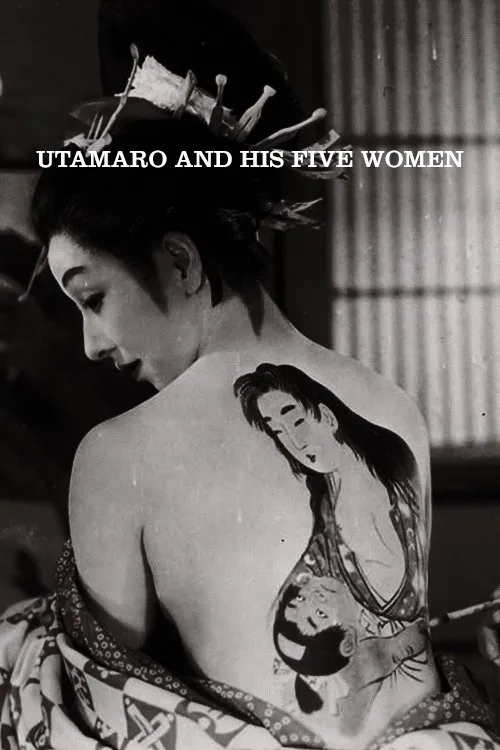Utamaro and His Five Women

Plot
Utamaro and His Five Women is a 1946 Japanese drama film directed by Kenji Mizoguchi, based on a novel by Yasunari Kawabata. Set in 18th century Tokyo, the film is an intimate and poignant portrayal of the artist's life, as he navigates the intricate web of relationships with the women who inspire his art. The film is named after the life of a renowned painter, Utamaro, who is celebrated for his exquisite portraits of courtesans. Utamaro's art is a reflection of his obsession with beauty, particularly the female form. His subjects are the elegant and refined courtesans of the Yoshiwara brothel district, where men from all walks of life come to seek the company of these beautiful women. Utamaro's art is a double-edged sword, as it not only brings him fame and fortune but also draws him into the lives of the women he portrays. Among his five models, we see the complexities of female desire and the fragility of their existence in a society where beauty is prized above all else. The courtesans are bound by strict social norms, and their lives are defined by prostitution in a brothel where the lines between love and commerce are constantly blurred. The story revolves around Utamaro's relationships with five courtesans, each with their own distinct personality and struggles. We have Otsute, a courtesan renowned for her intelligence and wit; Ayosuke, a talented musician and dancer who aspires to transcend her occupation; Okō, a fiery and passionate woman who becomes Utamaro's obsession; Konomi, a delicate and innocent beauty; and Sennō, a wise and compassionate older courtesan who serves as a confidante to the others. As the story unfolds, we see how Utamaro's relationships with the five women intertwine in complex ways, reflecting the tensions between art and reality, love and commerce, and the fleeting nature of life and beauty. The women around him challenge his perceptions, testing the limits of his art and his morality. Utamaro becomes increasingly entangled in their lives, finding himself torn between his duty as an artist and his responsibility to the women who inspire his work. One of the courtesans, Okō, captures Utamaro's heart, but their love is doomed from the start. Okō's social status as a courtesan is forever tied to her profession, and she is forced to navigate the intricate web of relationships between her clients and her fellow courtesans. When Utamaro's art inadvertently gets Okō into trouble, their relationship begins to fray, highlighting the constraints placed on courtesans in a society where their beauty was prized above all else. Through his portrayal of Utamaro and his relationships with the courtesans, Mizoguchi critiques the societal norms that govern the lives of women in traditional Japan. Women like Okō and Ayosuke must navigate a complex world of love, desire, and commercial exploitation. Their beauty is coveted, but their agency is limited by their status as courtesans. The men in their lives, including their clients and Utamaro himself, often hold the power to shape their destinies. The film is also a poignant commentary on the transience of beauty and the fragility of human life. The courtesans, with their exquisite beauty and delicate existence, serve as a poignant reminder of the fleeting nature of life and beauty. As the film reaches its conclusion, the lines between love and commerce blur further, as Okō's fate serves as a devastating reminder of the consequences of her societal position. Utamaro and His Five Women is a powerful and poignant exploration of the human experience, set against the backdrop of a traditional Japanese society. The film is a testament to the enduring power of Mizoguchi's storytelling, as he masterfully captures the intricacies of human relationships and the fragility of life in a world where beauty is prized above all else.
Reviews
Recommendations




